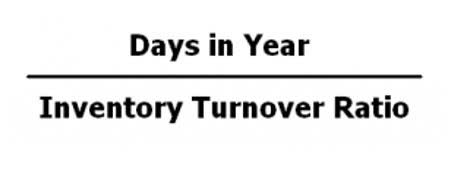
For the gross method, sales are recorded at the gross amount with no discount taken. If the customer pays within the discount period, the applicable discount taken is recorded to a sales discounts account. Any payments made after the discount period are simply the cash amount collected and no calculation for the sales discounts forfeited is required. As of January 1, 2018, GAAP requires a change in how health-careentities record bad debt expense. Before this change, theseentities would record revenues for billed services, even if theydid not expect to collect any payment from the patient.

How to Improve the Net A/R Percentage for Your Company?
It distinguishes open accounts receivables—or customers with outstanding balances—based on how long an invoice has been unpaid. Companies will use the information on an accounts receivable aging report to create collection letters to send to customers with overdue balances. Accounts receivable aging reports may be mailed to customers along with the month-end statement or a collection letter that provides a detailed account of outstanding items. Therefore, an accounts receivable aging report may be utilized by internal as well as external individuals. During the tough economic times in 2009 and onward, many companies were in such financial distress that they were simply unable to pay their amounts owing. Many of their accounts had to be written-off by suppliers during that time as companies struggled to survive the crisis.
Understanding and Applying the Percentage of Receivables Method in Accounting
The second method of estimating the allowance for doubtful accounts is the aging method. All outstanding accounts receivable are grouped by age, and specific percentages are applied to each group. The aggregate of all group results is the estimated uncollectible amount. Review your past aging of accounts receivable financial statements and evaluate the relationship between bad debt write-offs, credit sales, and receivables balances. Many accounting software packages help in preparing the aging schedule automatically. Companies may face financial issues if it has so many accounts payable.
- The equity theory is a motivation theory with the idea that what an employee receives for their work affects their motivation.
- The timing of when cash is received is the only distinction between these sales transactions.
- However, if the company adopts a more stringent credit policy, it may have to decrease the percentage rate because the company would expect fewer uncollectible accounts.
- Sales allowances are reductions in the selling price for goods sold to customers, perhaps due to damaged goods that the customer is willing to keep if the sales price is reduced sufficiently.
Unit 10: Receivables
- A credit entry is made to Allowance for Uncollectible Accounts, thereby adjusting the previous balance to the new, desired balance.
- In accordance with the matching principle of accounting, this ensures that expenses related to the sale are recorded in the same accounting period as the revenue is earned.
- Assume that a company has a debit balance in Accounts Receivable of $120,000 and has a credit balance of $1,000 in Allowance for Doubtful Accounts.
- Because the AFDA is a contra account to accounts receivable, and both have been reduced by identical amounts, there is no effect on the net accounts receivable (NRV) on the balance sheet.
- Knowing how much debt to expect can help you avoid that and thrive as a small business owner.
Other companies use the percentage of receivable method (or a variation known as the aging method). The reported expense is the amount needed to adjust the allowance to this ending total. Both methods provide no more than an approximation of net realizable value based on the validity of the percentages that are applied. Estimating uncollectible accounts Accountants use two basic methods to estimate uncollectible accounts for a period.
- This results in the presentation of the net realizable value of the receivables, which is the amount the company expects to collect.
- For instance, let’s say you wrote off an account earlier in the year, but then the company paid unexpectedly.
- An aging schedule classifies accounts receivable according to how long they have been outstanding and uses a different uncollectibility percentage rate for each age category.
- It is used as a gauge to determine the financial health and reliability of a company’s customers.
- Similarly, the introduction of new products or entry into new markets can alter the risk profile of a company’s receivables, necessitating adjustments to the percentage rate to reflect these new business activities.
- The $168,427 represents the net realizable value (NRV) of the receivable at the reporting date.
- A formal report that shows what an individual owns, what an individual owes and the difference between the two is a net worth statement.
Types of Accounts Receivables Aging

In the percentage-of-receivables method, the company may use either an overall rate or a different rate for each age category of receivables. The aging method is used to estimate the number of doubtful debts, which includes the approximate amount of uncollected receivables. The general rule is when accounts receivables remain outstanding for a long period of time. Accounts receivable aging reports are also required for writing off bad debts.
As this implies, whilst the discount price is better, cash in the future will be worth less than it’s far nowadays. On the other hand, the supplies were bought on credit which means that the company the supplies was bought from is being owed. The result is that the accounts receivable account will increase in value to show the debt. When a company purchases supplies on credit, the effect on the accounting equation is an increase in supplies and and increase in accounts payable. Accounts use this method of estimating the allowance to adhere to the matching principle. The matching principle states that revenue and expenses must be recorded in the same period in which they occur.
Example of the Percentage of Receivables Method
- Thismeans that BWW believes $22,911.50 will be uncollectible debt.Let’s say that on April 8, it was determined that Customer RobertCraft’s account was uncollectible in the amount of $5,000.
- If the estimate changes, TechCorp would adjust the Allowance for Doubtful Accounts and the Bad Debt Expense accordingly.
- If you have a customer who routinely orders a certain amount, and you find they’re suddenly ordering a substantially larger amount, this could be a sign that their business is going through a sudden growth spurt.
- The AFDA ending balance after the adjusting entry would correctly be $8,000 ().